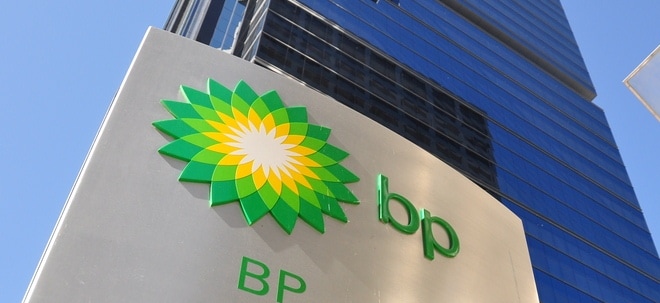Solar Energy Market to Grow by USD 5.46 Billion from 2025-2029, Driven by Sunny Climates and AI-Redefined Market Landscape - Technavio
NEW YORK, Jan. 13, 2025 /PRNewswire/ -- Report with market evolution powered by AI - The global solar energy market size is estimated to grow by USD 5.46 billion from 2025-2029, according to Technavio. The market is estimated to grow at a CAGR of 38% during the forecast period. Sunny climatic conditions is driving market growth, with a trend towards growing payg model. However, competition from alternative energy sources poses a challenge. Key market players include ARTsolar Pty Ltd, Canadian Solar Inc., Eaton Corp plc, Enel Spa, Ener G Africa, Energy Partners Solar Pty Ltd, ENGIE SA, FOXESS CO. LTD., Genergy, IBC SOLAR AG, Jetion Solar China Co. Ltd., Jiangsu Seraphim Solar System Co. Ltd., Jiangsu Zhongli Group Co. Ltd., JinkoSolar Holding Co. Ltd., Renenergy Ltd, Schneider Electric SE, Sharp Corp., Soventix GmbH, SunPower Corp., and Trina Solar Co. Ltd..
Key insights into market evolution with AI-powered analysis. Explore trends, segmentation, and growth drivers- View Free Sample PDF
Solar Energy Market Scope | |
Report Coverage | Details |
Base year | 2024 |
Historic period | 2019 - 2022 |
Forecast period | 2025-2029 |
Growth momentum & CAGR | Accelerate at a CAGR of 38% |
Market growth 2025-2029 | USD 5457.6 million |
Market structure | Fragmented |
YoY growth 2022-2023 (%) | 30.1 |
Regional analysis | South Africa |
Performing market contribution | Middle East and Africa at 100% |
Key countries | South Africa |
Key companies profiled | ARTsolar Pty Ltd, Canadian Solar Inc., Eaton Corp plc, Enel Spa, Ener G Africa, Energy Partners Solar Pty Ltd, ENGIE SA, FOXESS CO. LTD., Genergy, IBC SOLAR AG, Jetion Solar China Co. Ltd., Jiangsu Seraphim Solar System Co. Ltd., Jiangsu Zhongli Group Co. Ltd., JinkoSolar Holding Co. Ltd., Renenergy Ltd, Schneider Electric SE, Sharp Corp., Soventix GmbH, SunPower Corp., and Trina Solar Co. Ltd. |
Market Driver
Solar energy is a booming sector in the renewable energy market, with photovoltaic cells and concentrated solar power leading the way in electricity generation. Solar energy is a sustainable and low-cost energy resource, producing no greenhouse gas emissions and reducing our carbon footprint. Solar modules, made from monocrystalline, polycrystalline, cadmium telluride, or amorphous silicon, convert sunlight into electricity. Solar energy is used for heating, utility-scale electricity production, and even desalination plants. Energy storage solutions like batteries are essential for storing excess energy generated during peak sunlight hours. Solar concentrators and solar energy systems are power generation solutions that harness the sun's energy efficiently. Solar technology is an alternative to conventional energy sources, reducing carbon emissions and contributing to a greener energy mix. Solar energy adoption is increasing, with decentralized energy generation through rooftop solar programs and solar parks. Grid integration is crucial for the successful implementation of solar energy systems, increasing installed solar capacity and meeting growing electricity demand. Solar photovoltaic (PV) and solar modules are essential components of solar energy systems, with utility projects and MROs leading the way in solar power generation. Solar energy is the future of sustainable energy production, reducing our reliance on fossil fuels and contributing to a greener energy future.
The solar energy market has seen significant growth due to the declining costs of decentralized renewable technologies, such as solar photovoltaic (PV) and energy storage. This affordability has accelerated energy access, particularly in off-grid areas. However, the high upfront costs of building and financing renewable-based mini-grids have been a barrier for many households. To address this issue, a new business model called Pay-As-You-Go (PAYG) has emerged. Under this model, customers make a small initial payment and follow up with predetermined installments, often made through mobile phones. This innovative financing solution is crucial for expanding solar energy access to more households and communities.
Request Sample of our comprehensive report now to stay ahead in the AI-driven market evolution!
Market Challenges
- Solar energy is a renewable energy source that generates electricity through photovoltaic cells or concentrated solar power. The solar industry faces challenges in reducing the carbon footprint of solar energy production while keeping costs low. Solar modules, such as monocrystalline, polycrystalline, cadmium telluride, and amorphous silicon, play a crucial role in electricity generation. Solar energy can also provide heat and even be used in desalination plants. Energy storage and power generation solutions like solar concentrators and battery technologies are essential for sustainable energy production. Despite its benefits, solar energy adoption faces hurdles in grid integration and utility-scale electricity production. Solar technology includes PV hardware like silicon solar cells, charge controllers, and inverters. Renewable energies like solar power generation are becoming increasingly important in the energy mix as we strive to reduce our reliance on conventional energy sources and alternative power generation. Solar energy systems can be centralized in solar parks or decentralized on rooftops. Utility and non-utility projects are expanding solar potential, and grid integration is crucial for large-scale solar energy production. Installed solar capacity continues to grow, providing clean electricity for homes and businesses. Solar energy is a key player in the shift towards green energy and the reduction of carbon emissions.
- The solar energy market in South Africa has been growing, but fossil fuels continue to dominate the country's energy mix. In 2023, fossil fuels accounted for approximately 85% of the total electricity generation, according to the International Trade Administration. This is due in part to the abundance of fossil fuels and the high cost of establishing renewable energy farms. The power output from renewable energy sources also does not currently match that of fossil fuels. However, the solar energy sector offers long-term benefits such as reducing greenhouse gas emissions and increasing energy independence. Companies and investors looking to enter the solar energy market in South Africa should consider these factors and work to address the challenges in order to succeed.
Discover how AI is revolutionizing market trends- Get your access now!
Segment Overview
This solar energy market report extensively covers market segmentation by
- 1.1 Grid-connected
- 1.2 Off-grid
- 2.1 Utility
- 2.2 Rooftop
- 3.1 Middle East and Africa
1.1 Grid-connected- The grid-connected solar energy segment is set for significant growth during the forecast period. Grid-connected solar photovoltaic (PV) systems provide solar energy directly to buildings without energy storage, feeding excess electricity back to the grid. Renewable energy sources, electric mobility, and digital grid developments are key growth drivers. South Africa is focusing on grid-connected solar PV systems for power generation, reducing electricity costs and promoting energy security, economic growth, and sustainability. Government initiatives like the South African Large-Scale Grid Connected Solar Park Programme support this transition, with an additional 5.7GW of solar power expected by 2030. These developments will significantly expand the solar energy market in South Africa.
Download a Sample of our comprehensive report today to discover how AI-driven innovations are reshaping competitive dynamics
Research Analysis
Solar energy is a renewable and sustainable source of electricity generation, harnessing the power of the sun through photovoltaic cells and concentrated solar power. Solar energy systems convert sunlight into electricity, reducing our reliance on fossil fuels and decreasing greenhouse gas emissions. Solar technology includes solar modules made of silicon solar cells, which convert sunlight directly into electricity. Concentrated solar power uses mirrors or lenses to focus sunlight on a small area, generating heat to produce electricity. Solar energy adoption is increasing as it offers low-cost energy generation and a smaller carbon footprint compared to conventional energy sources. Solar parks and decentralized energy generation are becoming more common, with grid integration enabling the distribution of solar power to utility and non-utility customers. Battery technologies are also advancing to store excess solar energy for use during peak demand periods. The energy mix is shifting towards renewable energies, with solar power generation becoming a significant contributor to meeting global energy demand.
Market Research Overview
Solar energy is a renewable energy source that utilizes photovoltaic cells and concentrated solar power to generate electricity and heat. It is a sustainable alternative to traditional fossil fuel-based energy sources, reducing greenhouse gas emissions and carbon footprint. Solar energy systems include solar modules made of monocrystalline, polycrystalline, cadmium telluride, amorphous silicon, and multi-Si technology. Solar energy is used for utility-scale electricity production, decentralized energy generation, and even in desalination plants. Energy storage solutions like battery technologies and power generation solutions such as solar concentrators are essential for maximizing solar energy production and grid integration. Solar energy adoption is growing as an alternative power generation source to conventional energy resources, with an increasing energy mix towards solar power generation. The solar industry offers various PV hardware components like silicon solar cells, charge controllers, inverters, and thin film technologies. The potential for solar energy is vast, and it is a significant contributor to the global energy production mix. Solar energy systems provide low-cost energy generation and are essential for reducing carbon emissions in the energy sector.
Table of Contents:
1 Executive Summary
2 Market Landscape
3 Market Sizing
4 Historic Market Size
5 Five Forces Analysis
6 Market Segmentation
- Application
- Grid-connected
- Off-grid
- End-user
- Utility
- Rooftop
- Geography
- Middle East And Africa
7 Customer Landscape
8 Geographic Landscape
9 Drivers, Challenges, and Trends
10 Company Landscape
11 Company Analysis
12 Appendix
About Technavio
Technavio is a leading global technology research and advisory company. Their research and analysis focuses on emerging market trends and provides actionable insights to help businesses identify market opportunities and develop effective strategies to optimize their market positions.
With over 500 specialized analysts, Technavio's report library consists of more than 17,000 reports and counting, covering 800 technologies, spanning across 50 countries. Their client base consists of enterprises of all sizes, including more than 100 Fortune 500 companies. This growing client base relies on Technavio's comprehensive coverage, extensive research, and actionable market insights to identify opportunities in existing and potential markets and assess their competitive positions within changing market scenarios.
Contacts
Technavio Research
Jesse Maida
Media & Marketing Executive
US: +1 844 364 1100
UK: +44 203 893 3200
Email: media@technavio.com
Website: www.technavio.com/
![]() View original content to download multimedia:https://www.prnewswire.com/news-releases/solar-energy-market-to-grow-by-usd-5-46-billion-from-2025-2029--driven-by-sunny-climates-and-ai-redefined-market-landscape---technavio-302347917.html
View original content to download multimedia:https://www.prnewswire.com/news-releases/solar-energy-market-to-grow-by-usd-5-46-billion-from-2025-2029--driven-by-sunny-climates-and-ai-redefined-market-landscape---technavio-302347917.html
SOURCE Technavio



